If you've ever been captivated by the mystery of the wild or the allure of the unknown, the Siberian cat is a breed that might just pique your interest.
Hailing from the frosty landscapes of Siberia, these felines carry a touch of the wild in their genes, coupled with a temperament perfect for domestic companionship.
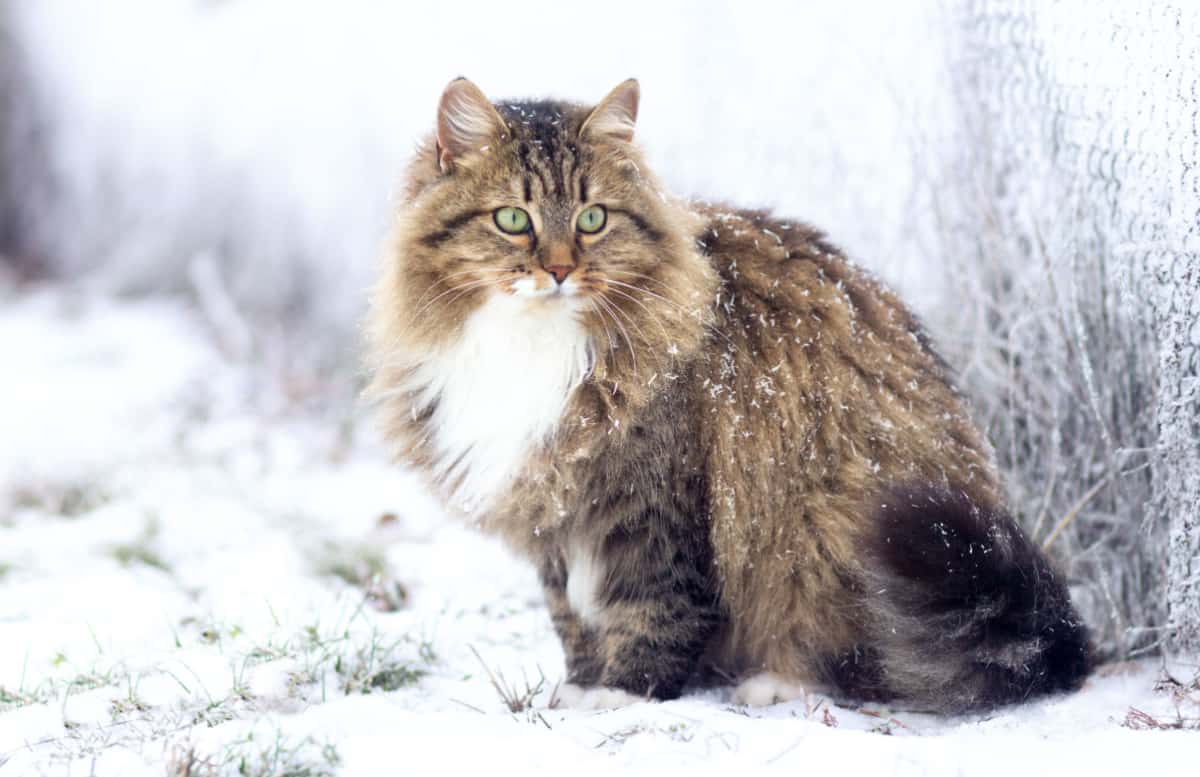
Their unique mix of traits and characteristics makes them one of the most interesting cat breeds to learn about.
Continue reading as we journey through the fascinating world of the Siberian cat, revealing what makes this breed truly special.
The Siberian Cat's Journey to the United States
The Siberian cat, often recognized as the national cat of Russia, didn't make its grand appearance in the United States until 1990.
Even three decades later, this breed is still relatively scarce, making it a sought-after pet for cat enthusiasts.
Its unique personality, often described as "dog-like," coupled with its agility, has been winning hearts across the country.
Despite the rarity, the demand for Siberian kittens remains high, resulting in long waiting lists.
If you're considering adding a Siberian cat to your family, patience is key - but the wait is absolutely worth it!
Unraveling the Siberian Cat's Unique Appearance
Every aspect of the Siberian cat's appearance speaks to its rich heritage and natural charm. Now, let's explore these distinctive features in more detail.
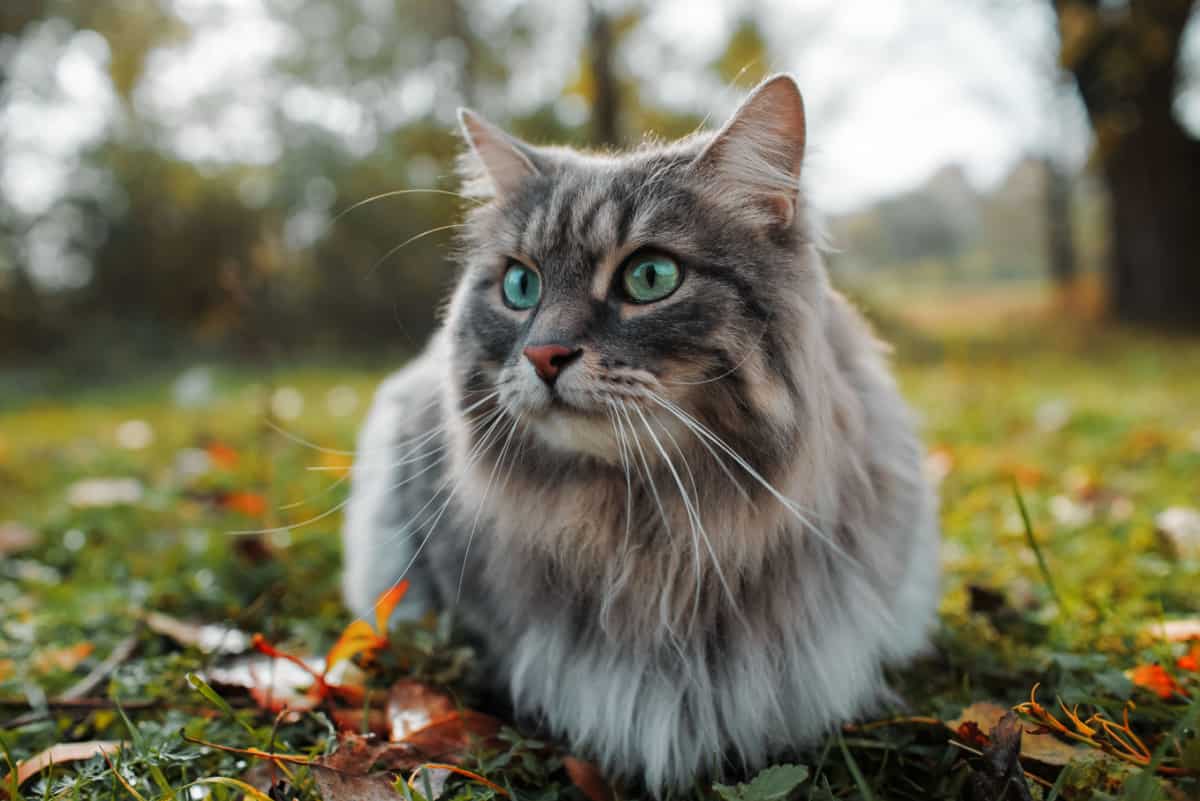
Size and Muscular Build of Siberian Cats
Siberian cats are among the largest breeds of domesticated cats. Males typically weigh between 15-20 pounds, while females are slightly smaller, often weighing between 10-15 pounds.
Despite their size, they are agile and well-balanced, owing to their muscular build.
This muscular strength is a key feature of the breed, stemming from their ancestors who had to survive in the harsh climates of Siberia.
Siberian Cats' Dense Fur and Colors
The Siberian cat's dense, water-resistant triple-layered fur is one of the breed's defining features.
This luxuriant coat, which includes a thick undercoat, awn hairs (middle layer), and guard hairs (outer layer), protects the cats against the freezing Siberian winters.
Siberians come in a wide range of colors and patterns, from solid colors to tabby and colorpoint patterns.
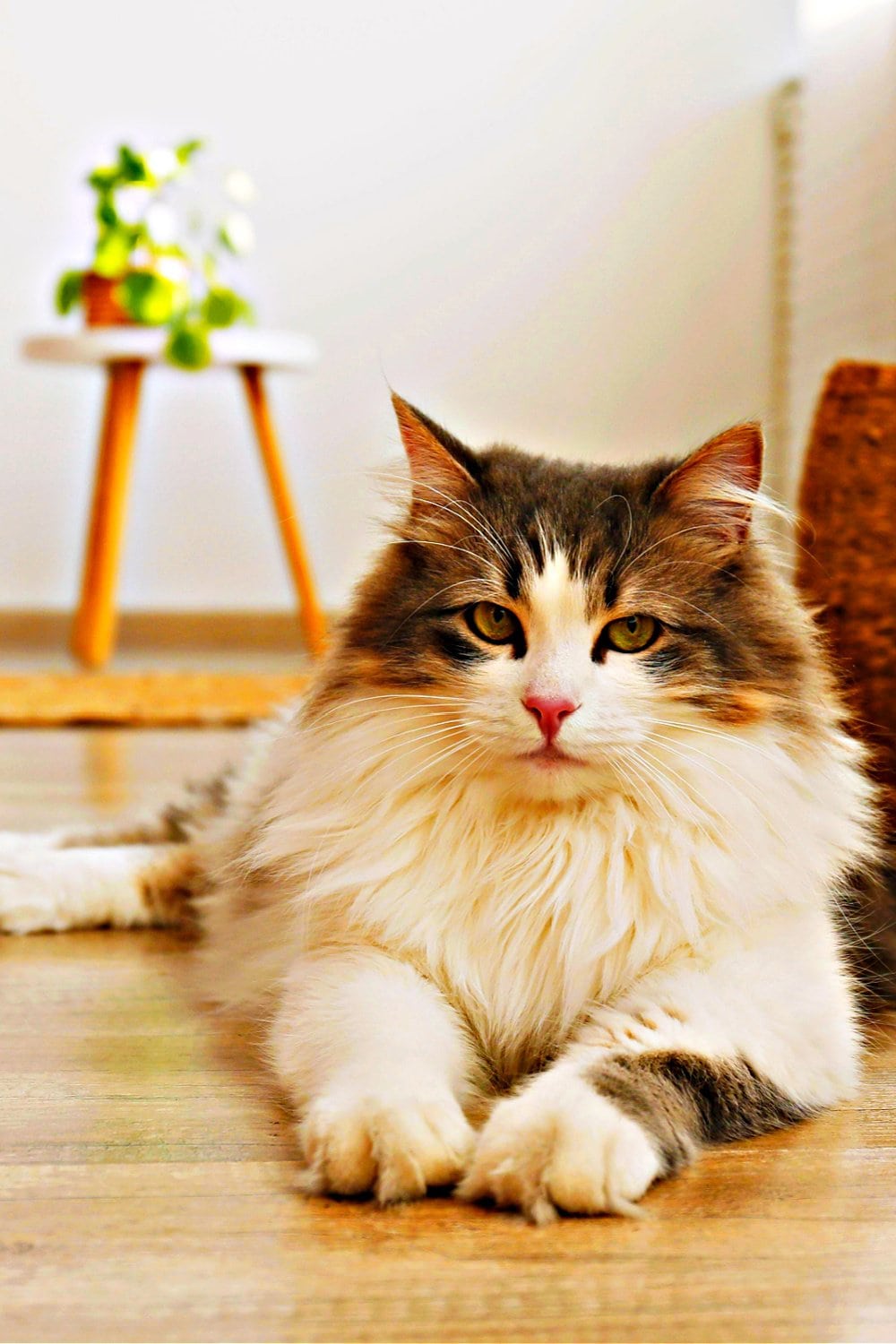
Eye Colors in Siberian Cats
Siberian cats have round, large eyes that can be green, gold, or copper. Some Siberians may have blue eyes, especially those with colorpoint patterns similar to Siamese cats.
Interestingly, it's not uncommon for Siberians to have two different colored eyes, a condition known as heterochromia, adding to their unique charm.
The Distinctive Ear Tufts of Siberian Cats
Another interesting feature of Siberian cats is their medium-large sized ears with rounded tips, set wide apart.
The ears often have tufts of fur, also known as "lynx tipping," which can give them a wild appearance. This is another adaptation to their cold native climate, helping to keep their ears warm.
Understanding Personality Traits and Temperament of Siberian Cat
The following are common traits of the Siberian breed. However, individual cats may vary, and their environment and upbringing also play a significant role in shaping their personality.
Affectionate and Family-oriented
Siberian cats are known for their deep affection towards their human family. They love spending time with their owners and often form strong bonds.
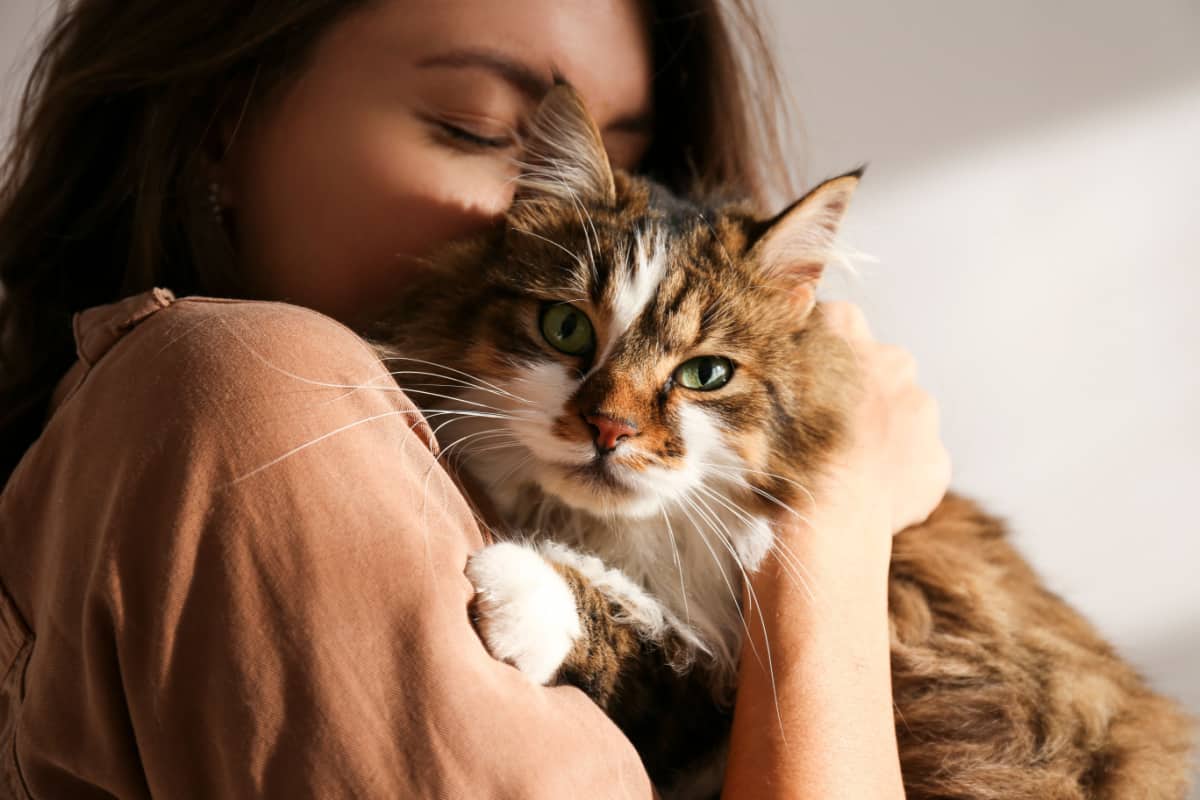
They are not overly demanding of attention, but they enjoy being involved in family activities and won't shy away from expressing their love.
Playful and Energetic
One of the delightful traits of the Siberian cat is its playful and energetic nature. Despite their larger size, they are agile and nimble.
Playtime is important for these cats as it provides both physical exercise and mental stimulation.
They are likely to enjoy toys that mimic prey, like feathers or faux fur mice, which cater to their natural hunting instincts.
Intelligent and Trainable
Siberians are highly intelligent cats, which makes them quick learners and easy to train.
They can often learn new commands and tricks, and some owners even train their Siberians to walk on a leash.
Their intelligence also means they are curious and inquisitive, often exploring their surroundings and even learning to open doors or cabinets.
Social and Good with Other Pets
Siberian cats are generally sociable and get along well with other pets in the household, including dogs.
They enjoy the company of other animals and can often be found playing or cuddling with their furry siblings.
However, as with any pet introduction, it's important to do it gradually and under supervision to ensure a smooth transition.
Adaptability
Siberians are known for their adaptability. They can adjust well to different living conditions and family structures, whether a large family or a single-person household.
Their easy-going nature makes them a good choice for various homes, provided they receive the necessary love and care.
SIGN UP FOR THECATSITE'S EMAIL UPDATES >
How Long Do Siberian Cats Live?
Siberian cats are known for their fairly robust health and longevity.
While the lifespan of a feral cat averages around 4 to 5 years, domesticated cats, including Siberians, enjoy much longer lives, ranging from 10 to 20 years and sometimes even as long as 28 years.
The average lifespan of a Siberian cat specifically falls between 10 to 18 years.
However, numerous factors such as genetics, environmental conditions, overall health, quality of care, and weight can influence a Siberian cat's lifespan
The Ideal Diet for Your Siberian Cat
As obligate carnivores, Siberian cats require a diet high in animal protein. Their nutritional needs can be met with both commercial cat food and homemade diets.
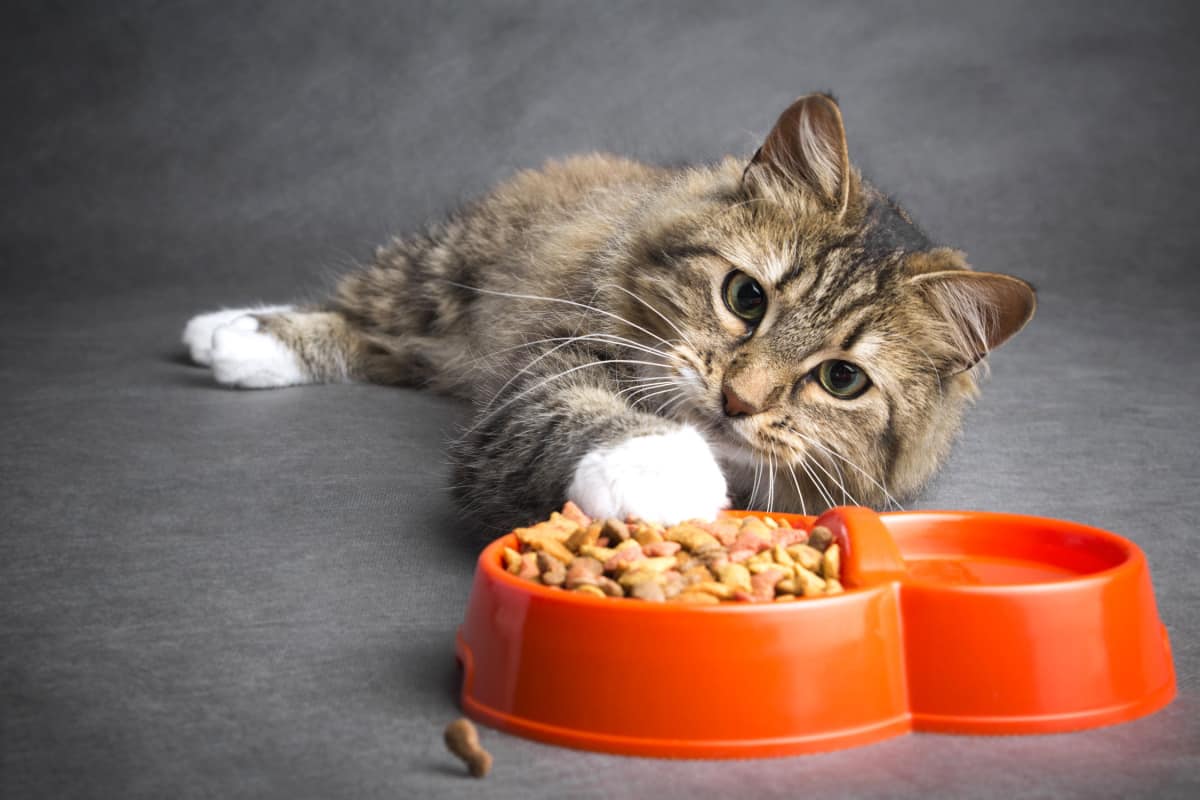
However, it's important to ensure any diet provides the right balance of proteins, fats, carbohydrates, and essential vitamins and minerals.
High-Protein Commercial Cat Food: A Popular Choice
Commercial cat foods, whether dry kibble or wet food, are commonly used by many Siberian cat owners.
When choosing a brand, look for one that lists a source of animal protein, like chicken or fish, as the first ingredient.
Avoid foods with excessive fillers like corn, wheat, and soy, as these contribute little nutritional value and can cause allergies in some cats.
Homemade Diets: An Alternative Option
Some owners prefer to feed their Siberian cats a homemade diet. This can be a good way to control the ingredients and avoid preservatives and fillers.
However, preparing a homemade diet that meets all your cat's nutritional needs can be challenging.
It's recommended to consult with a vet or a pet nutrition expert to ensure the diet is balanced and complete.
Dietary Supplements for Siberian Cats
While a balanced diet should provide all the necessary nutrients, some Siberian cats may benefit from dietary supplements.
Common supplements for cats include fish oil for omega-3 fatty acids, which promote skin and coat health, and probiotics to support gut health.
Always consult your vet before starting any supplement regimen.
The Importance of Hydration
Water intake is crucial for Siberian cats, especially for those fed a primarily dry food diet. Always ensure your cat has access to fresh water.
Some cats prefer running water, so consider getting a cat water fountain if your cat isn't drinking enough.
Monitoring Food Intake: Preventing Obesity
Some Siberian cats may tend to overeat, which can lead to obesity. It's important to monitor your cat's food intake and maintain a regular feeding schedule.
The amount of food your cat needs can depend on its age, size, and activity level. If you're unsure about the right amount, consult with your vet.
Are Siberian Cats Hypoallergenic?
Despite there being no entirely allergy-free cat, the Siberian cat has been found to have fewer levels of Fel d 1.
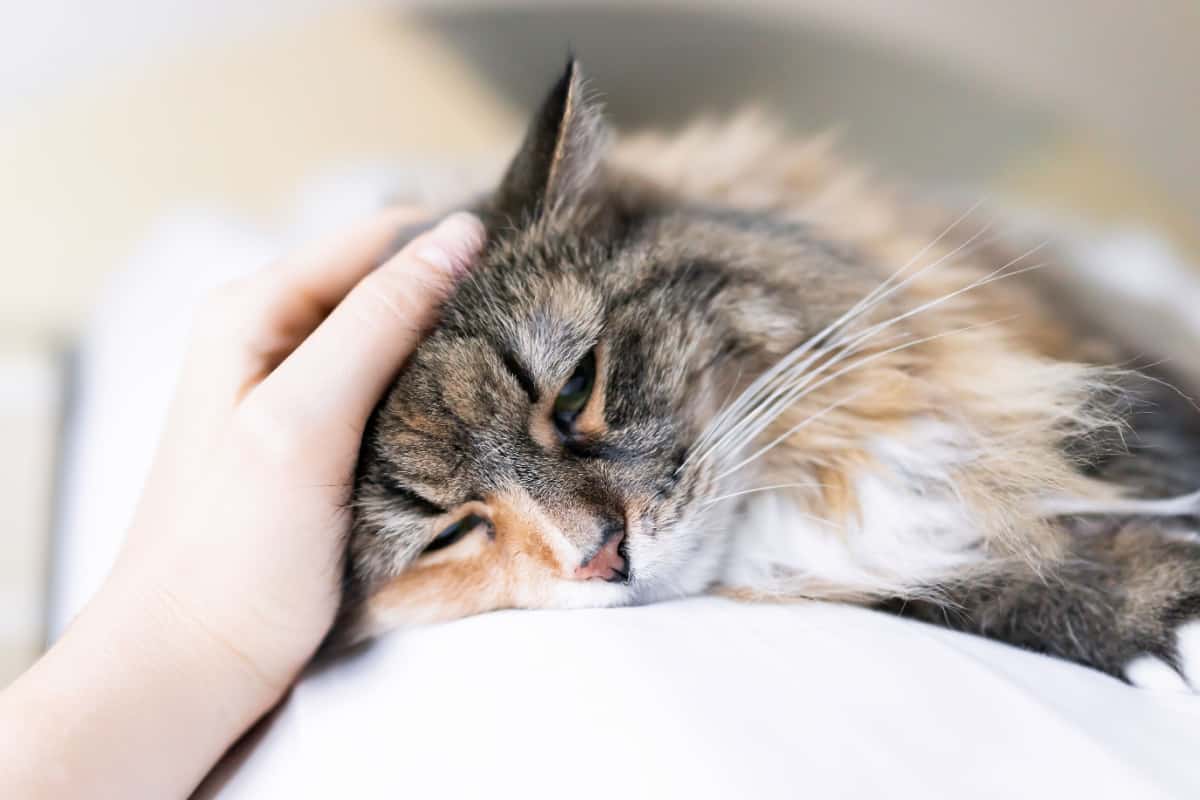
Fel d 1 is the primary protein allergen present in cats’ saliva. Due to these low quantities, Siberian Cats are often considered hypoallergenic.
However, it's important to note that small amounts of Fel d1 can still spark up allergies, which can range from severe and life-threatening to causing puffy eyes and nasal congestion.
Causes of Allergies in Siberian Cats
Allergies can be triggered by the cat’s hair, saliva, or dander.
Siberians, with their heavy fur coats, shed heavily after winter and lightly at summer's end, potentially triggering allergies in susceptible individuals.
Pre-Adoption Allergen Test
Testing a cat’s allergen levels before adoption is highly recommended, especially for people with severe allergies. This helps determine the risk and the suitability of the cat for your home.
Daily Care Routine to Reduce Allergic Reactions
Regular baths and occasional brushing can minimize dander and loose hairs, common allergens.
Additionally, thorough vacuuming and sweeping can clear fur and dander from your home.
Minimizing Interactions and Proper Hygiene
Reducing interactions between the Siberian cat and the person with allergies can help manage sensitivity levels.
It's also important to wash hands after handling the cat to prevent allergen spread.
Seeking Medical Advice
If natural methods fail, consult your physician for recommendations on anti-histamine medications or long-term treatments for your allergies.
The Joy of Owning a Siberian Cat
Owning a Siberian cat can be a rewarding experience. Their engaging personalities, beautiful appearance, and unique attributes make them a favorite among cat enthusiasts.
Whether you're a seasoned cat owner or considering your first feline friend, the Siberian cat offers a blend of characteristics that make them a wonderful addition to many homes.
Comments? Leave them using the comment section below. Questions? Please use the cat forums for those!
SIGN UP FOR THECATSITE'S EMAIL UPDATES >
Discover more breeds by checking out the articles below.
What Breed Can A Tuxedo Cat Be?
Orange Cat Eyes: What Breed Could It Be?
Note: We may get commissions for purchases made through links on this page.





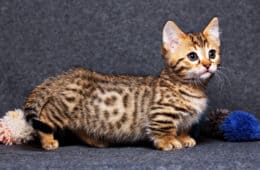
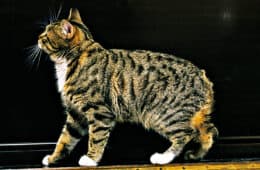
4 comments on “The Siberian Cat – An In-Depth Look at This Majestic Breed”